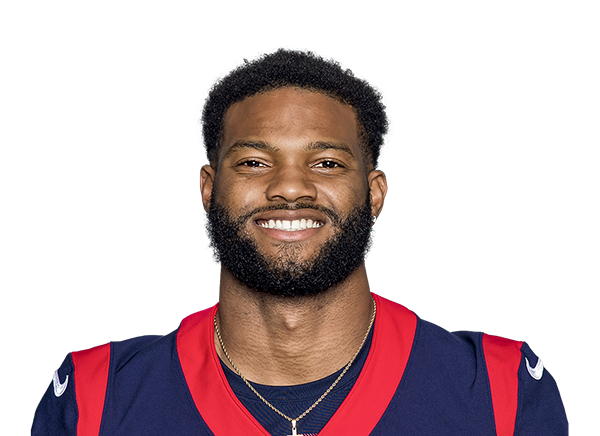DJ: Defying Judgment
Though the NFL playoffs rage on, we’ve now officially reached the fantasy football off-season (well, technically – in dynasty leagues, and at DLF especially, there is no off-season, but for the purposes of this article we’re simply not playing the games right now). This means that in a few short months, and perhaps even weeks for the extremists amongst us, startup draft season will be upon us. As such, you can expect to see a variety of strategy pieces as we attempt to guide your way to dominating your future leagues.
To that last point, it’s fair to posit that over the last several years, the predominant strategy was geared towards a two-pronged vision: to enhance the value of wide receivers, while tanking the worth of running backs. And for a while, and perhaps still, it made/makes sense. The NFL was becoming a passing league, and the majority of NFL backfields were shifting towards committees. Receivers also tend to last longer, and were fairly predictable on a yearly basis. The rise of the #ZeroRB phenomenon became the “pet rock” of fantasy football, and not without good reason.
And then 2016 happened.
[am4show have=’g1;’ guest_error=’sub_message’ user_error=’sub_message’ ]
Though we don’t focus on redraft too much in these parts, it would’ve been awfully hard to win your league this past season if you didn’t have a top-flight ball carrier. Not only did the studs provide more consistency and higher ceilings than their pass-catching counterparts, for the first time in several years they were every bit as predictable, with the elite assets providing a similar return on investment. To that point, I wrote a November article detailing that, in fact, our preseason beliefs on both positions were nearly synonymous.
Whether the rise of the ball carrier leads to yet another dynasty paradigm shift, the point I’m trying to make here is that, while you don’t always need to adjust your prior beliefs, failure to do so in the face of overwhelming evidence can be foolish. Disregarding 2016 as nothing more than a fluke is a dangerous line of thinking – if nothing else, it’s worth investigating to see if we can glean any trends, along with their potential effects on dynasty values. As such, speaking with more granularity, I’ve done the research and have come to a trend-bucking conclusion – David Johnson should be the first pick in a dynasty startup draft.
Yes, he’s a running back. And yes, he came into the league older than most (Johnson was a 23-year old rookie). But what Johnson’s been able to do in just two seasons is nothing short of remarkable.
As a first-year player, Johnson turned 161 touches into a robust 1,038 total yards and 12 touchdowns, and he finished the season as the PPR RB8. This, of course, lent itself to multiple, efficiency-based arguments against him (some propagated by yours truly). He averaged 12.7 yards-per-reception, a total which would make most slot receivers drool, and was 1.7 YPR higher than the next qualified ball carrier (Charles Sims). He also scored once every 13.4 touches – these were numbers that had to decrease, right?
Well yes, they did. In 2016 he was only able to achieve 11.0 YPR, and his scoring pace diminished drastically to once every 18.7 touches. Of course, he also had 373 touches (including 80 receptions) for 2,118 yards and 20 total touchdowns, which kinda sorta rendered this unfortunate “loss of efficiency” moot, and brings me to the table below.
*Johnson left week 17 early, and as such these numbers aren’t included in the total or average values
In summation, what we have above is a blow-by-blow argument as to why exactly Johnson should be venerated as the top overall dynasty asset, which I’ll outline below:
1. He possesses the most elite ceiling in fantasy football: Last season Falcons running back Devonta Freeman scored 320.9 PPR points in 15 games, which was over 50 points more than the next closest running back. DJ’s 2016 outdid that output by more than 80 points! Even with his week 17 injury (more on that later), he scored 84.4 points more than the PPR RB2, Ezekiel Elliott. He scored over 100 points more than the PPR WR1, Antonio Brown. Only two players outscored him, and both were quarterbacks.
Now consider the far right column. On a weekly basis, Johnson was the overall RB1 six times in 15 games. He was a top-six ball carrier 10 times, and a PPR RB1 in every game except for one. You simply won’t find this type of elite ability and consistency outside of Le’Veon Bell (side note: this article could very well be about Bell if not for the suspension concerns).
2. His floor is higher than most players’ ceilings: Going hand in hand with the point above, Johnson didn’t have fewer than 16.4 PPR points in any given week. He had fewer than 20 PPR points only four times. On average, he was the weekly PPR RB5.5. Not only is he out there winning you weeks, he’ll never lose them for you.
3. He’s both an RB1 and a WR3 in the same body: At 219.3 PPR points of rushing output (rushing yards and rushing touchdowns), and 185.1 PPR points of receiving output (receptions, receiving yards, and receiving touchdowns), Johnson would’ve been the seasonal RB11 and the WR36, using numbers only through 15 games. In other words, he was a startable asset at two positions, every week.
Digging deeper, the Top-12 PPR running backs (sans Johnson) scored 3,127.3 PPR points over 179 games, for an average of 17.5 PPR PPG. Johnson eclipsed or came within ~3 points of that total, with just his rushing numbers, eight times. The WR1 threshold held at just under 15 PPR PPG, a number Johnson surpassed five times, while only falling below six PPR points from receiving in three weeks. Johnson is a true dual threat player.
4. The touchdowns sure help, but they’re not crucial: Johnson scored a whopping 20 times on the season, for an average of 1.3 per game. This added 120 points to his overall total, helping him achieve the elite ceiling he did. But in the five games Johnson didn’t score, he still finished as an RB1 four times, and was the overall PPR RB15 the fifth time. On the whole, touchdowns accounted for just under 30% of Johnson’s totals.
Even more incredible, if we took away all of Johnson’s touchdowns, he still would’ve had 284.4 PPR points. If we compared this number to the other running backs, while letting them keep their points from touchdowns, Johnson still would’ve been the PPR RB7. Compared to receivers, he still would’ve outscored all but the top four receivers. This effectively helps speak to his floor, which will remain intact even if the scoring pace drops off.
5. He’s not game-flow dependent: In wins, Johnson had 25.5 touches per game. In losses, he had 21.4 touches per game (the Cardinals had one tie as well). Yes, it was a bit better when Arizona came out on top, but Johnson still got his regardless of the scenario, largely due to his pass-catching prowess. In fact, I’d go out on a limb to say that, along with Bell, Johnson is the only game-flow independent player in the league (note: we don’t yet know this about Elliott, as the Cowboys won 13 times).
Now one argument that I’ve seen used against Johnson is that he got hurt, which is what running backs are prone to do. Going further, I’ve seen some take the leap that if Johnson sprained his knee in week five instead of week 17, we wouldn’t be talking about running back dominance. To that all I can say is, “cool story bro!”
If Keenan Allen didn’t get hurt in the first game, he would’ve scored PPR points. If Sammy Watkins could ever stay healthy, he might be a perennial top-five scorer. If Corey Coleman didn’t get injured, maybe he would’ve broken out like Michael Thomas. If AJ Green didn’t go down, he could’ve been the top receiver this year. If Dez Bryant didn’t miss time, maybe he would’ve forged a better connection with Dak Prescott. And so on and so on and so on. Players either get hurt or they don’t, and it happens when it happens. Johnson sprained his knee, an injury that happens regardless of position, in the week 17 finale, and it only negligibly affected his bottom line.
The more prevalent argument circles back to the years-old (weak pun intended) longevity debate. Yes, receivers last longer than running backs. But I’ve always been of the belief that owners attempting to predict more than three to four years in the future are full of it. We simply don’t know what we don’t know, and a lot can change over time. Think about it – how much has changed in your own life over the past few years? The exact same things can happen in professional sports.
But what makes Johnson special is that, in addition to only being 25 and in the prime of his career, he possesses the ability to “age gracefully” due to his pass catching prowess. It’s not difficult to envision Johnson following a similar career arc to guys like Jamaal Charles and Matt Forte, who maintain value in part due to their ability to function as receivers out of the backfield. Is it thoroughly unreasonable to see him functioning as an elite dual threat for the next three to four years, while still operating as a “1b” and third-down back type in the twilight of his career? If that the case, why on earth wouldn’t you pay the ultimate premium to acquire that luxury?
For that, and for the other reasons listed above, I certainly would. Johnson is out there winning weeks and seasons right now, and apart from history (i.e. things that have happened previously to running backs who aren’t Johnson), there’s no reason to think it won’t continue. His skill set also lends itself to an ability to continue functioning as a viable fantasy asset even when he’s past his prime. You don’t always need to zig when others zag, but to me that’s not even the case here – it’s simply choosing to refuse to ignore the obvious, which is that Johnson defies convention, and the current mantra of “receivers first” shouldn’t apply to him.
So, would you take David Johnson first overall?
Follow me on Twitter @EDH_27
[/am4show]
- Dynasty Fantasy Football Mailbag: Jordan Love and Jordan Addison - April 22, 2025
- Forgotten Dynasty Veterans: Bottom Tier - April 21, 2025
- Dynasty Fantasy Football Mailbag: Malik Nabers and Isiah Pacheco - April 15, 2025

























































